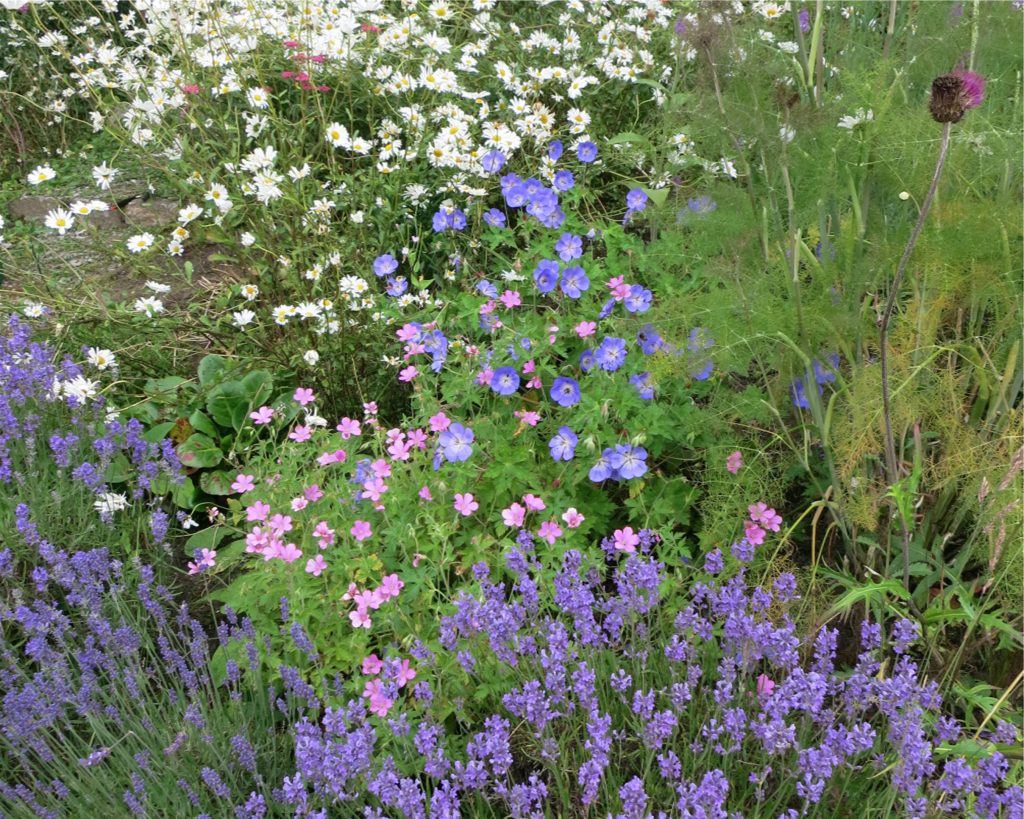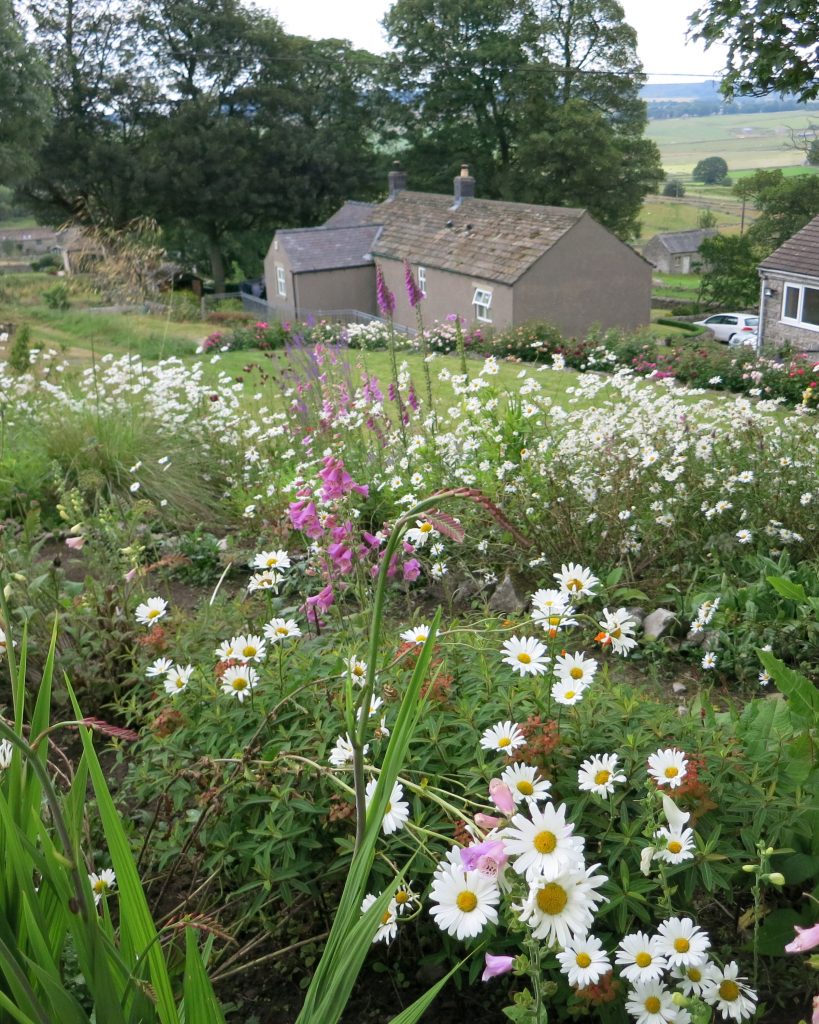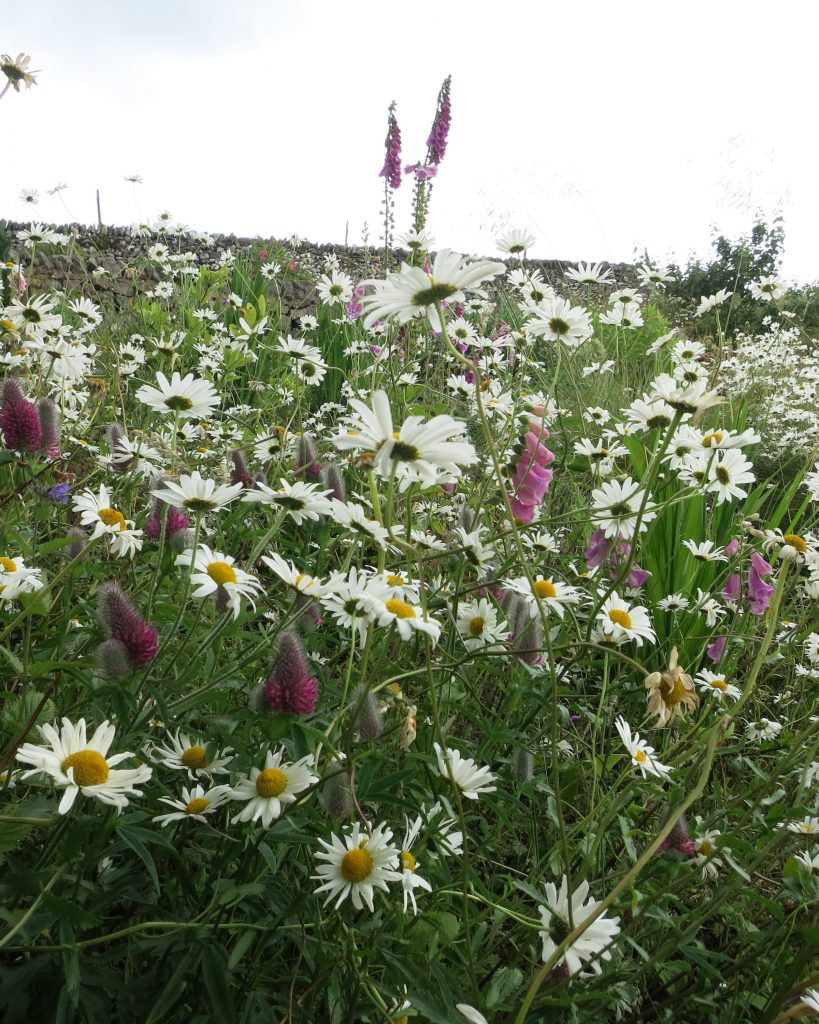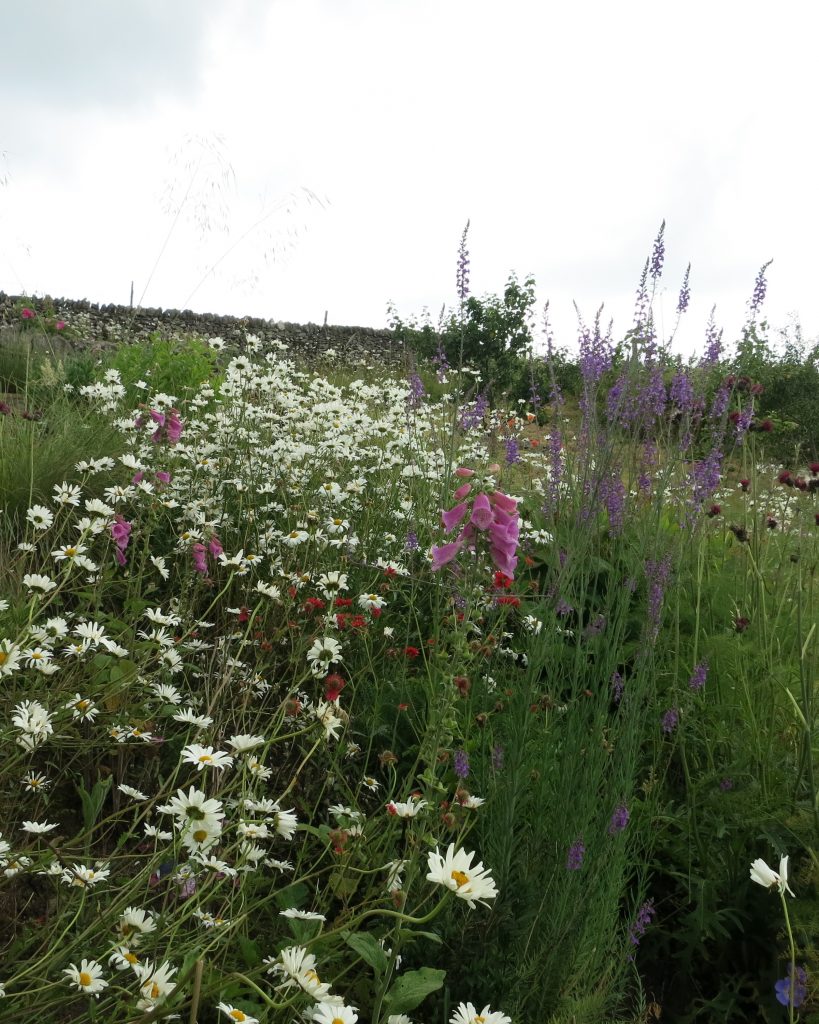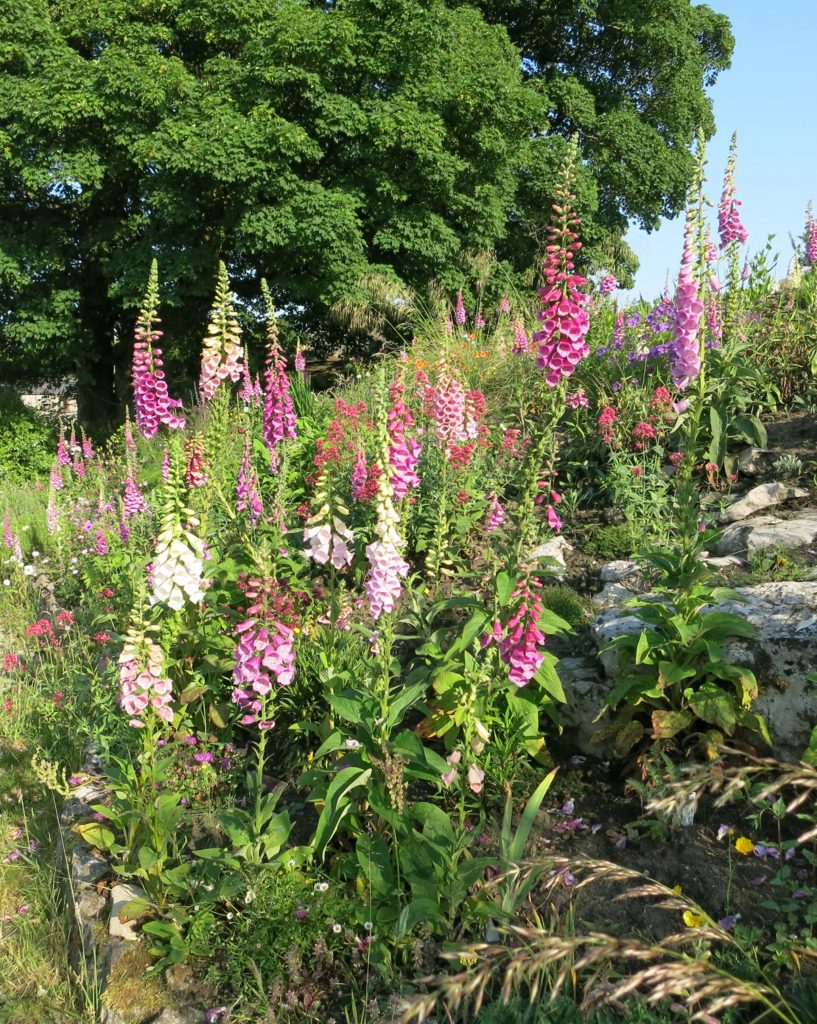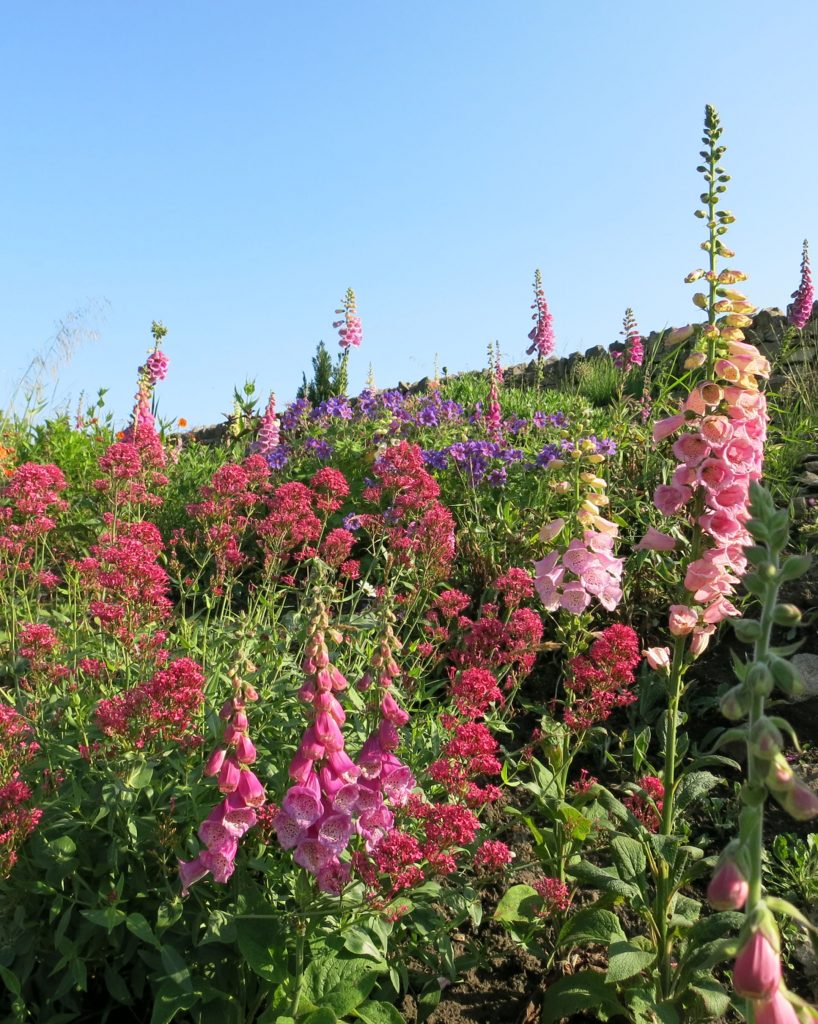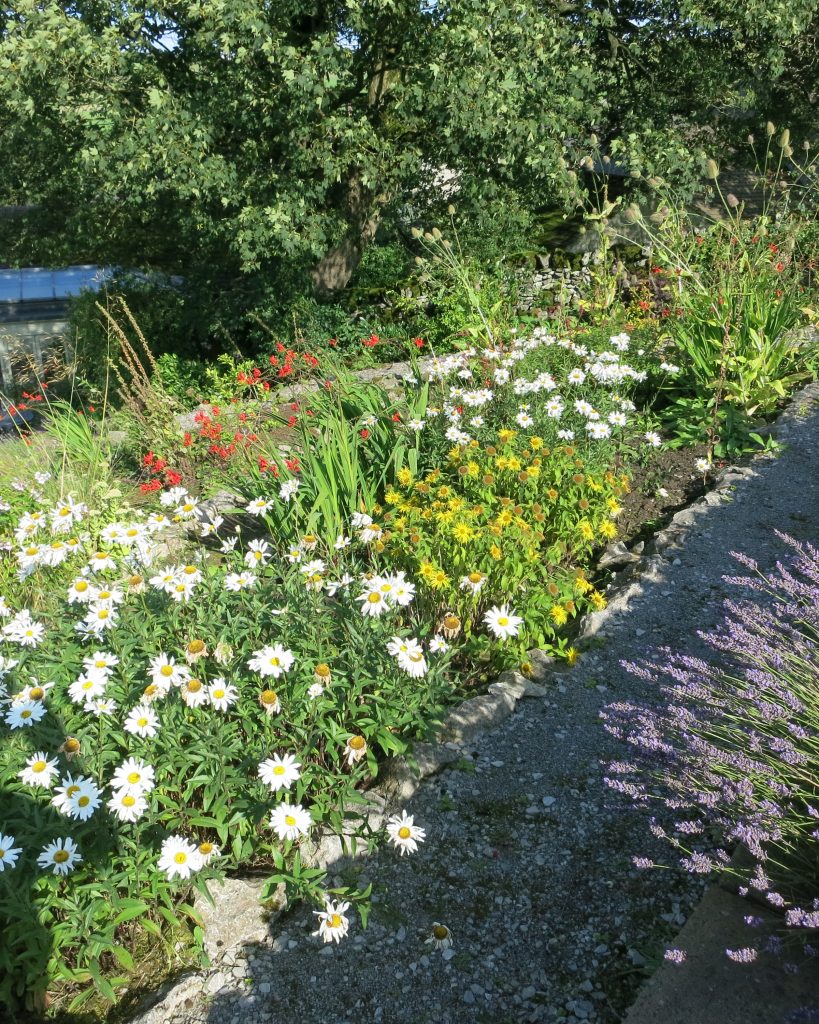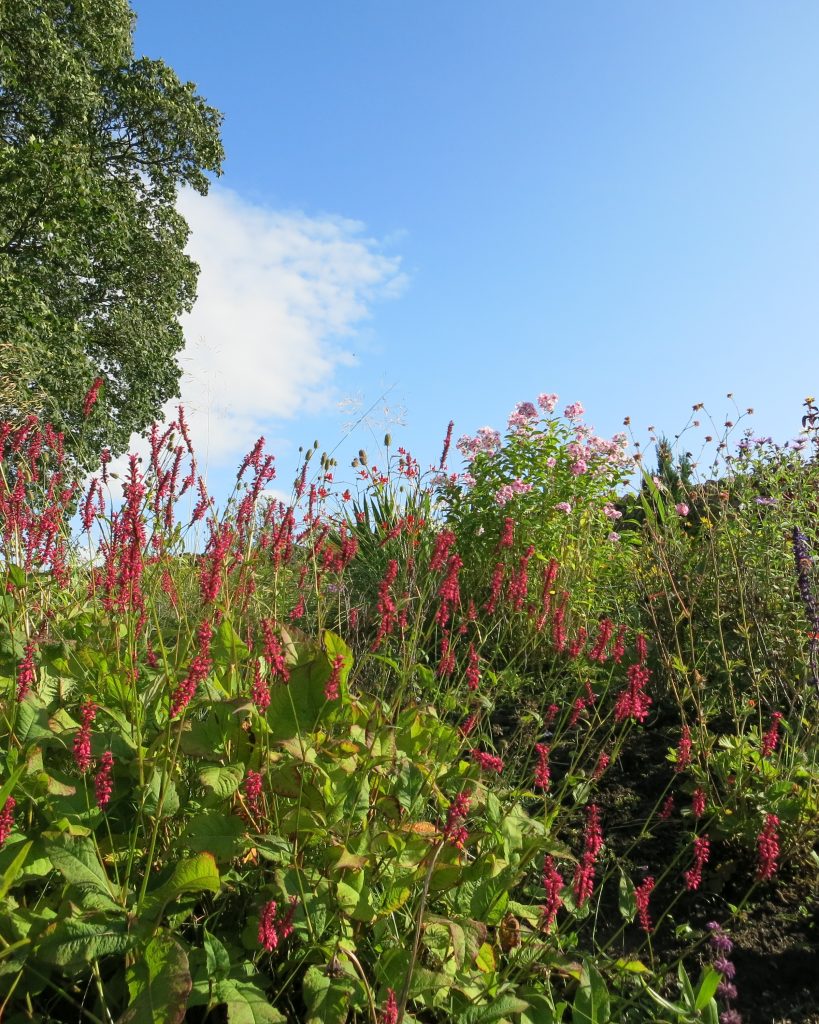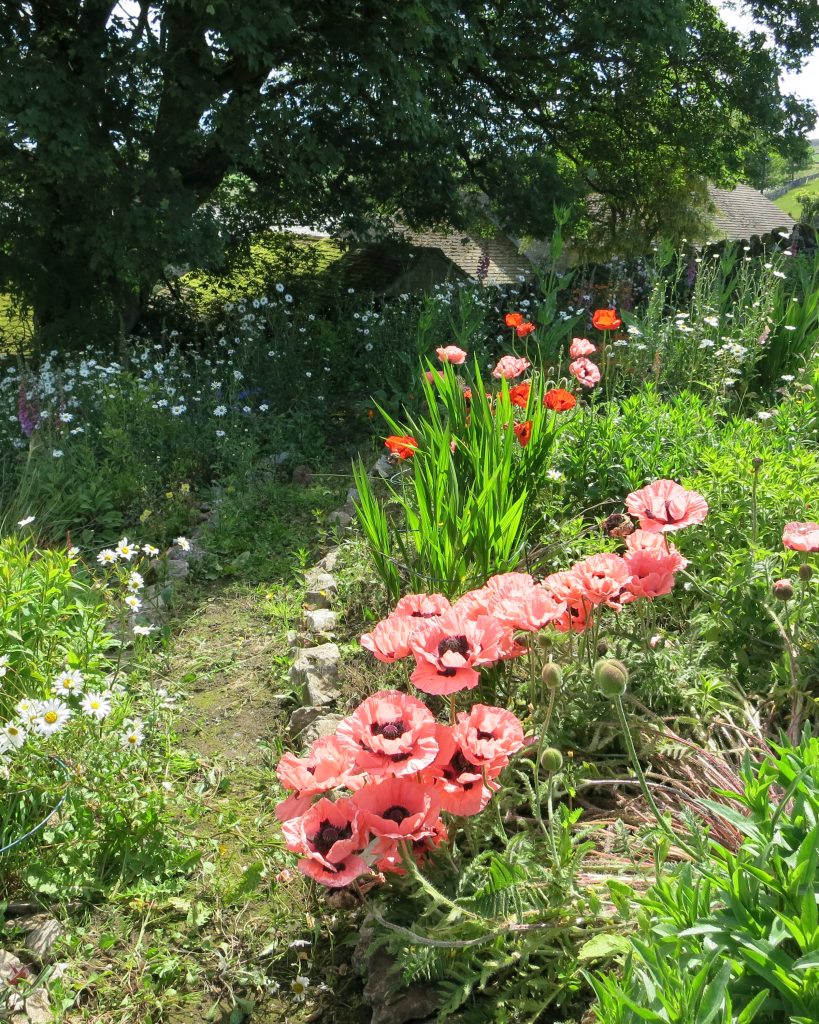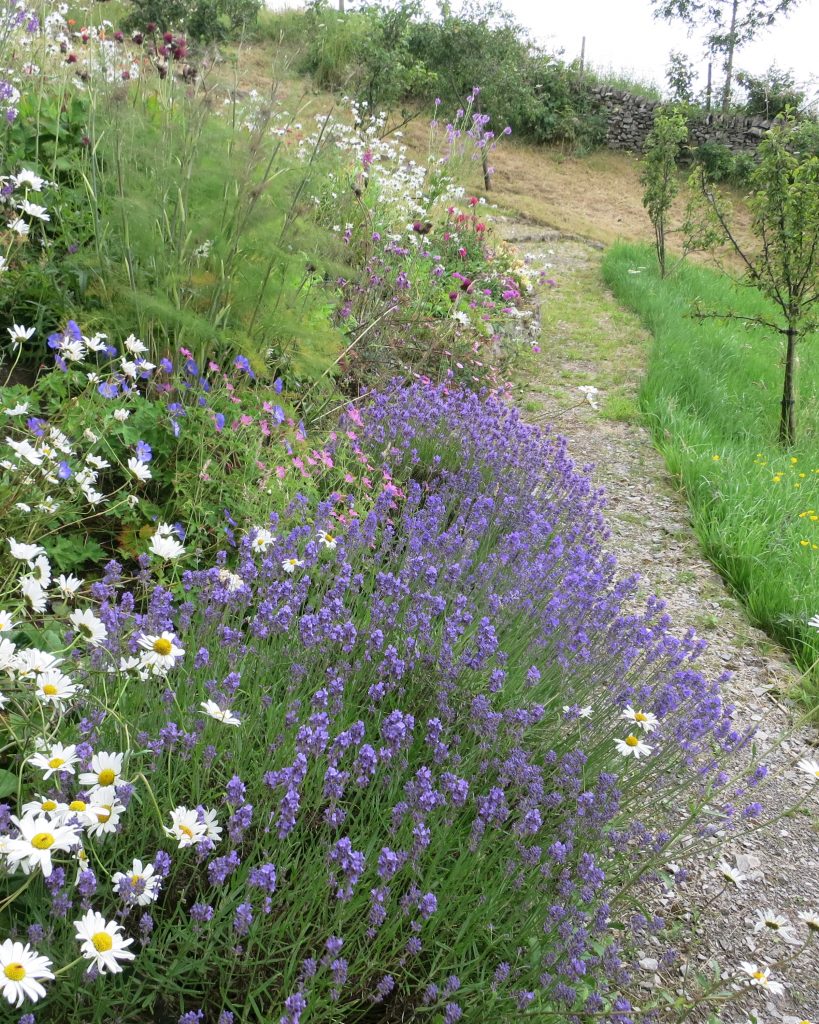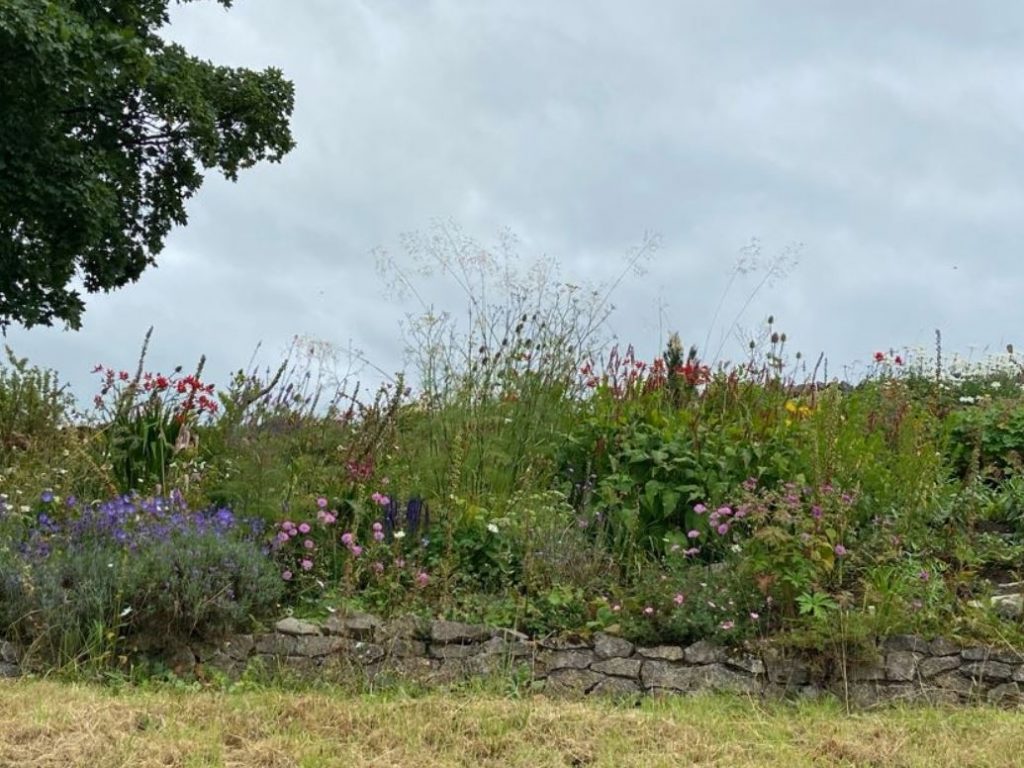The first thing we did, on obtaining the chunk of hillside behind the house, was to climb up to the top and enjoy the view of the surrounding countryside. It would make a great place to sit, having an almost 360 degree view across a wide expanse of Derbyshire’s White Peak landscape, but there was nowhere flat enough to position a seat and the steep gradient made access extremely difficult. If we were ever going to be able to use this hill for anything other than grazing a couple of sheep, we would need to create a level seating area and carve some access pathways, but that would require time and finance. Meanwhile, I was impatient to make a start on developing the hillside into a garden; I aimed for a loose tapestry of colour and texture with a mix of perennials, grasses, annuals and wild flowers.
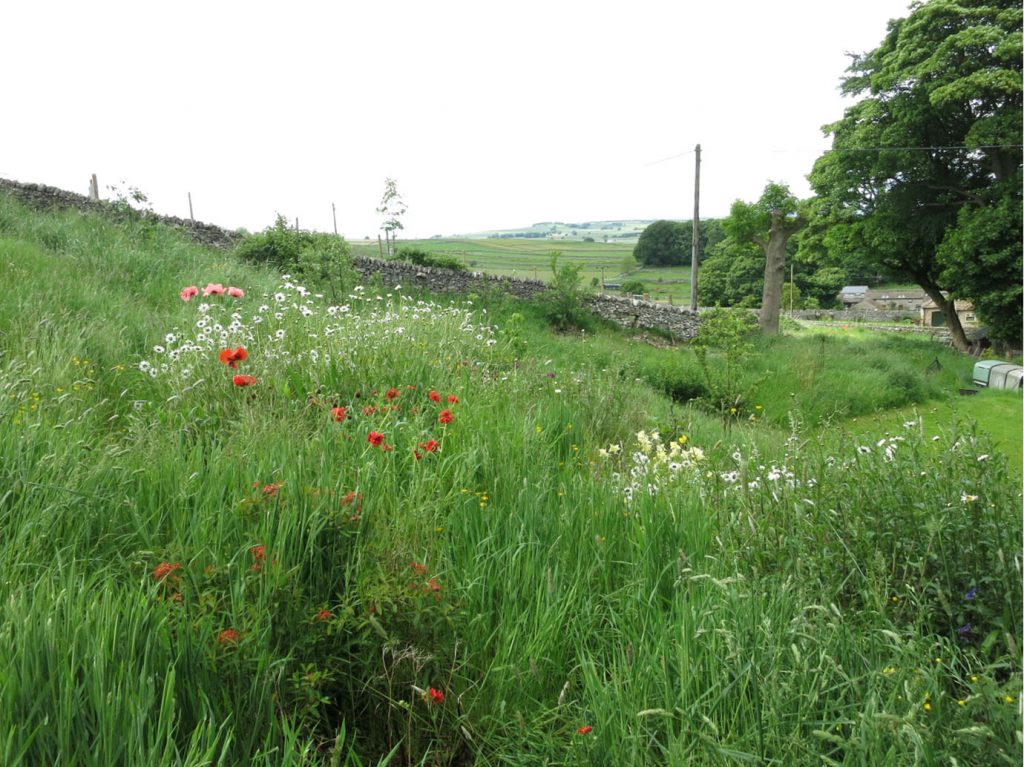
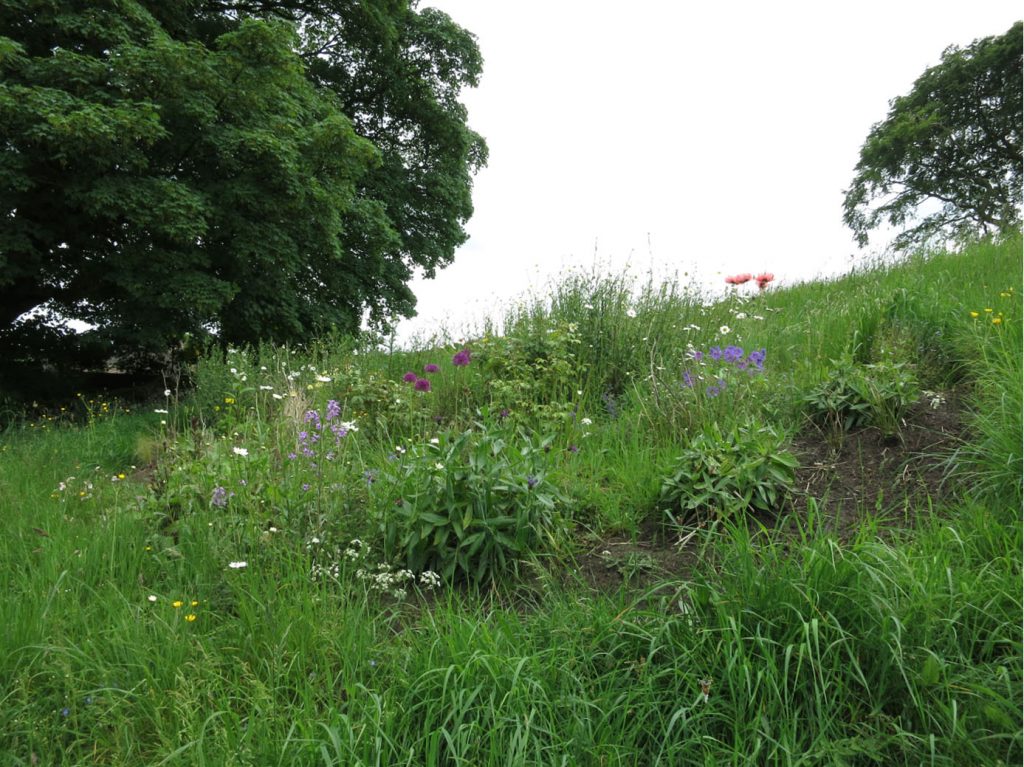
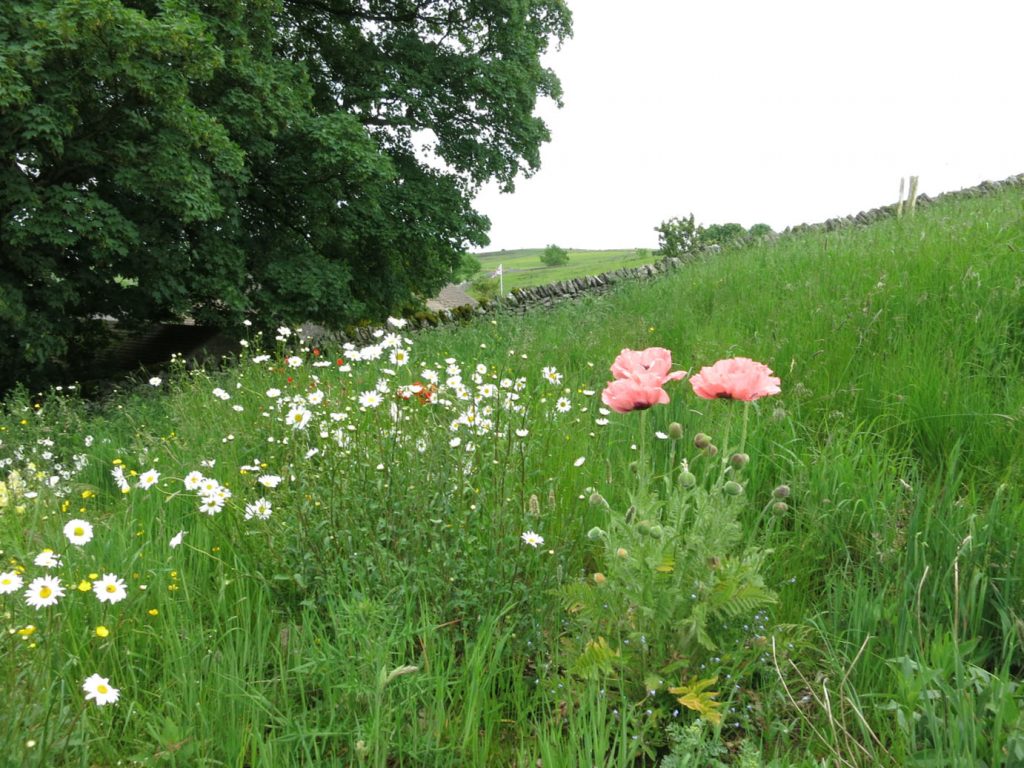
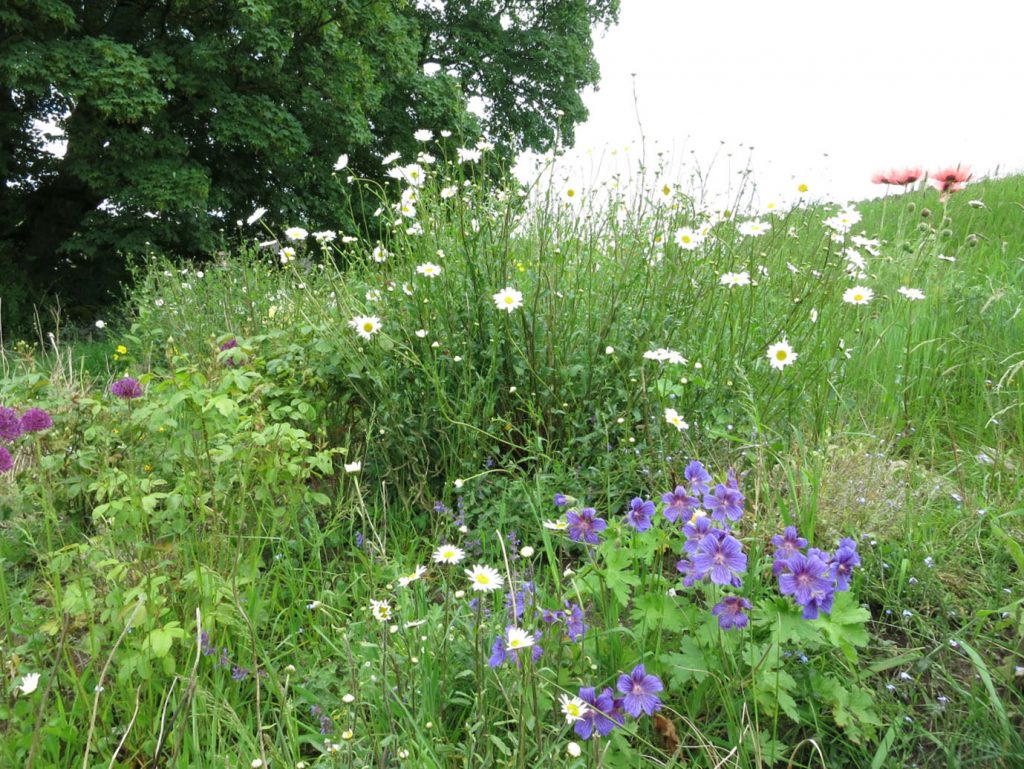
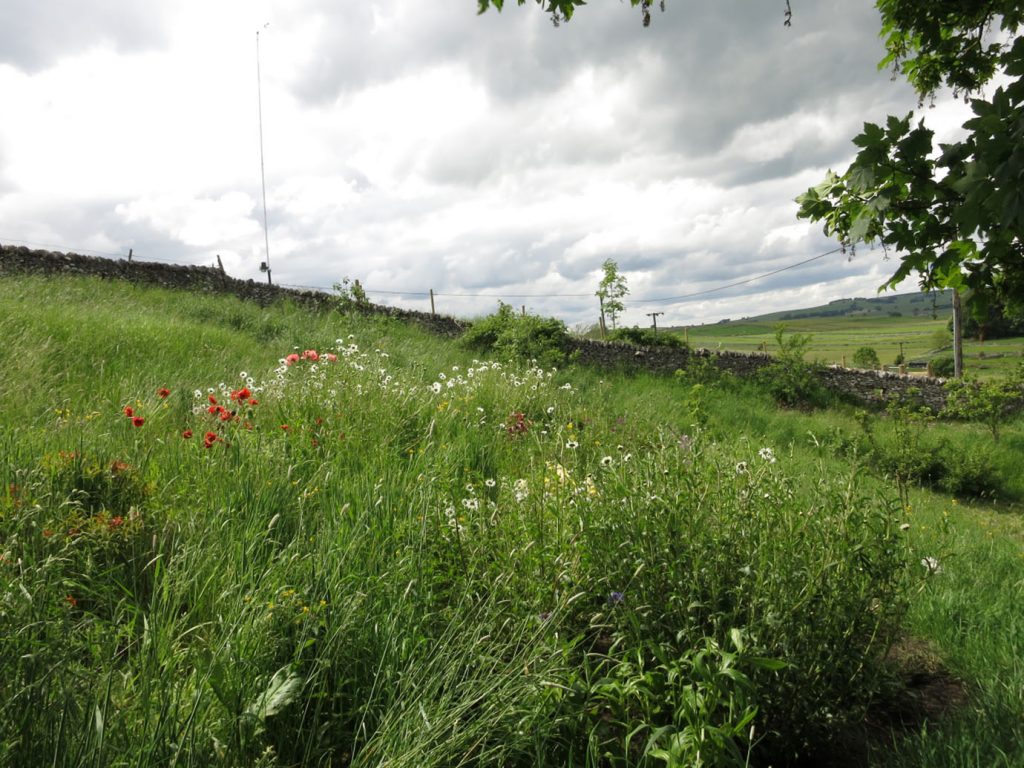
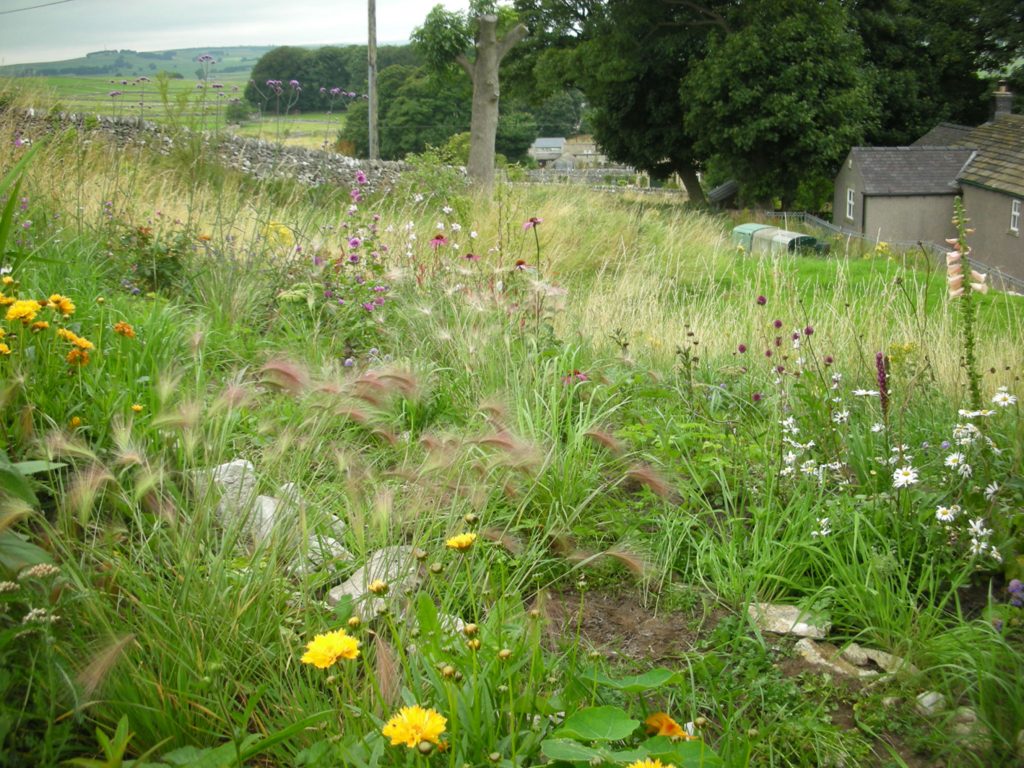
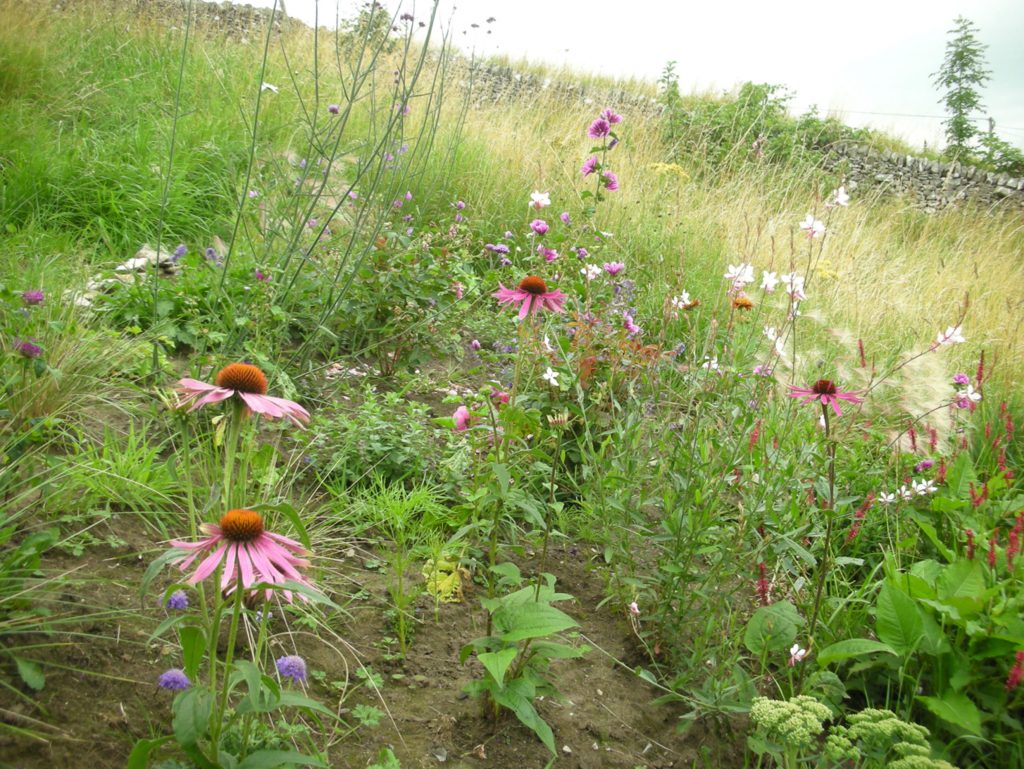
The Persicaria is doing well but, sadly, I cannot seem to succeed with Echinacea or Gaura, neither of which appear to survive our winters.
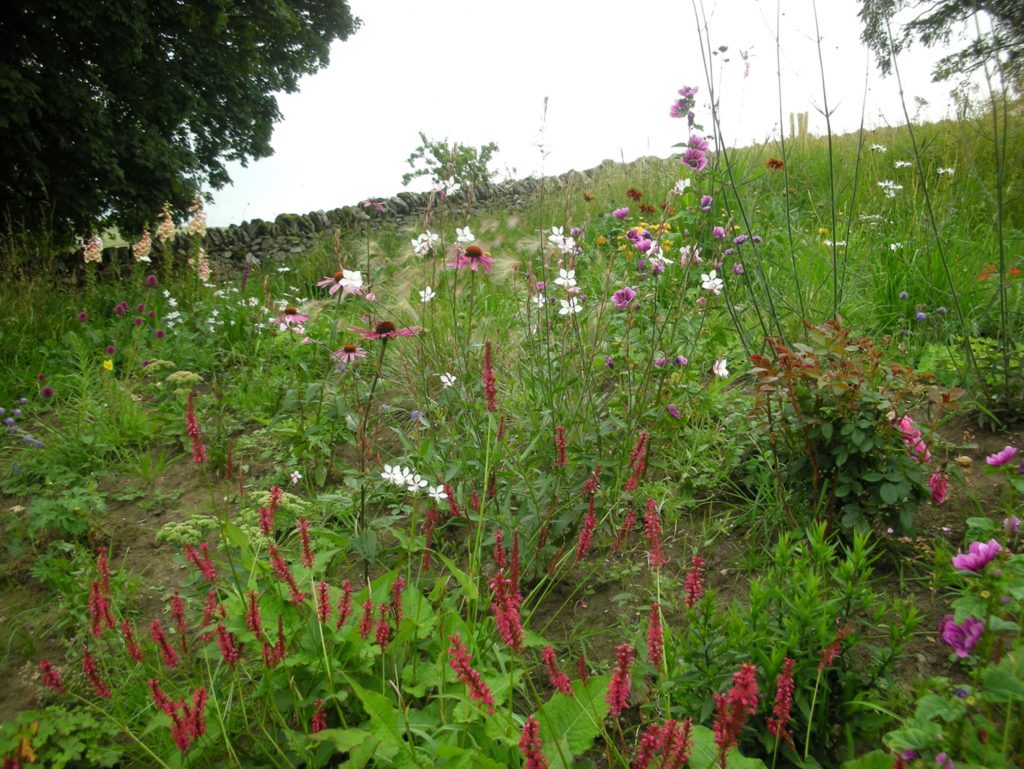
Whilst I was enjoying the effect of the mixed planting, the physical difficulty of gardening on such a steep slope was extremely challenging. It was clear that further progress would not be possible until we had tackled the issue of pathways. In order to decide where the pathways should lead, I needed to decide whether the proposed seating area at the very top of the hill was feasible, so I set about investigating the possibilities with my trusty mattock and crowbar. As you can see, an awful lot of limestone comes out of every hole I dig in this garden.
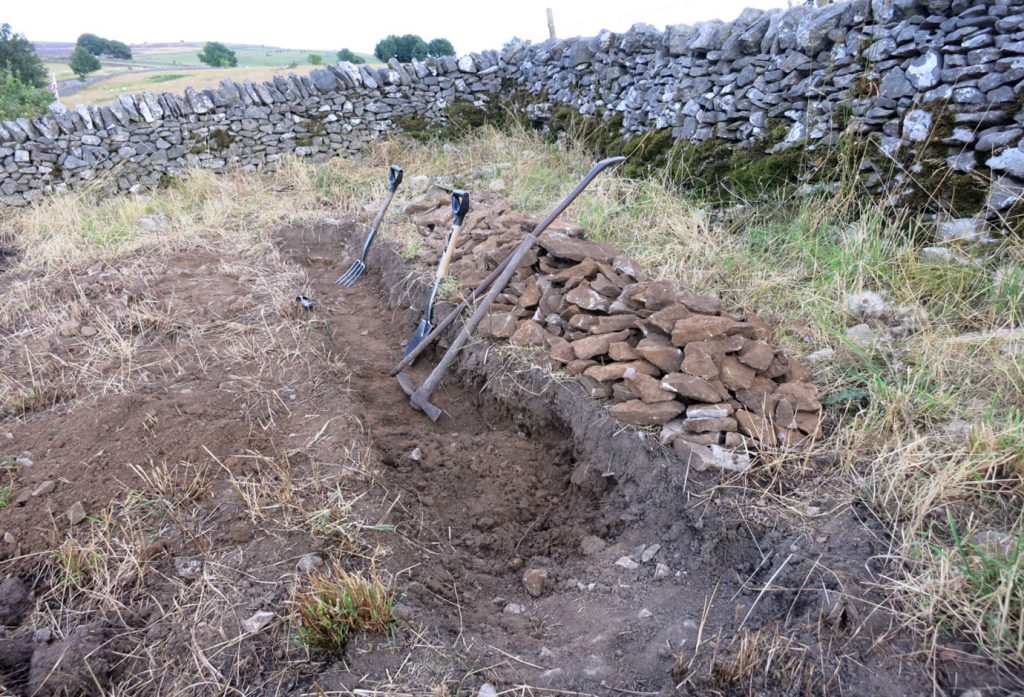
Time to call in the professionals. In order to negotiate the steep slope, it was necessary to angle the paths, slalom-style, and a route had to be created between the previously planted fruit trees. Any soil removed from the paths was used to smooth out some of the most uneven areas.
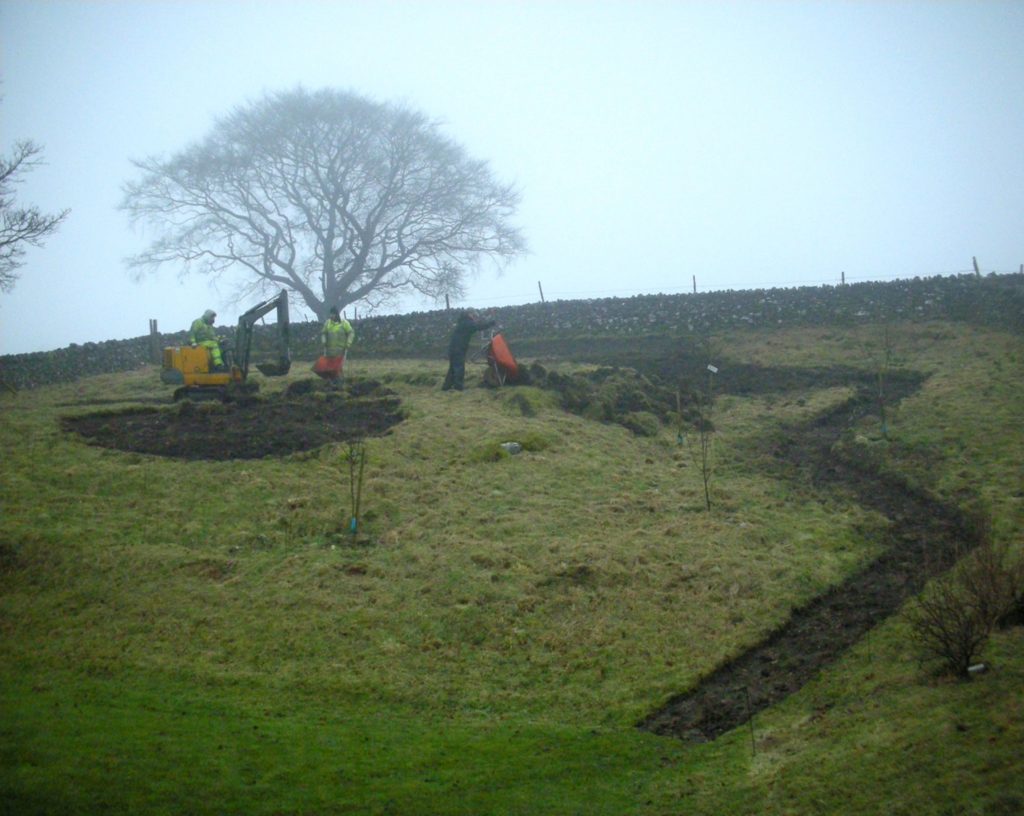
The top terrace
The following three photographs taken from the same spot,
looking right, left and straight ahead
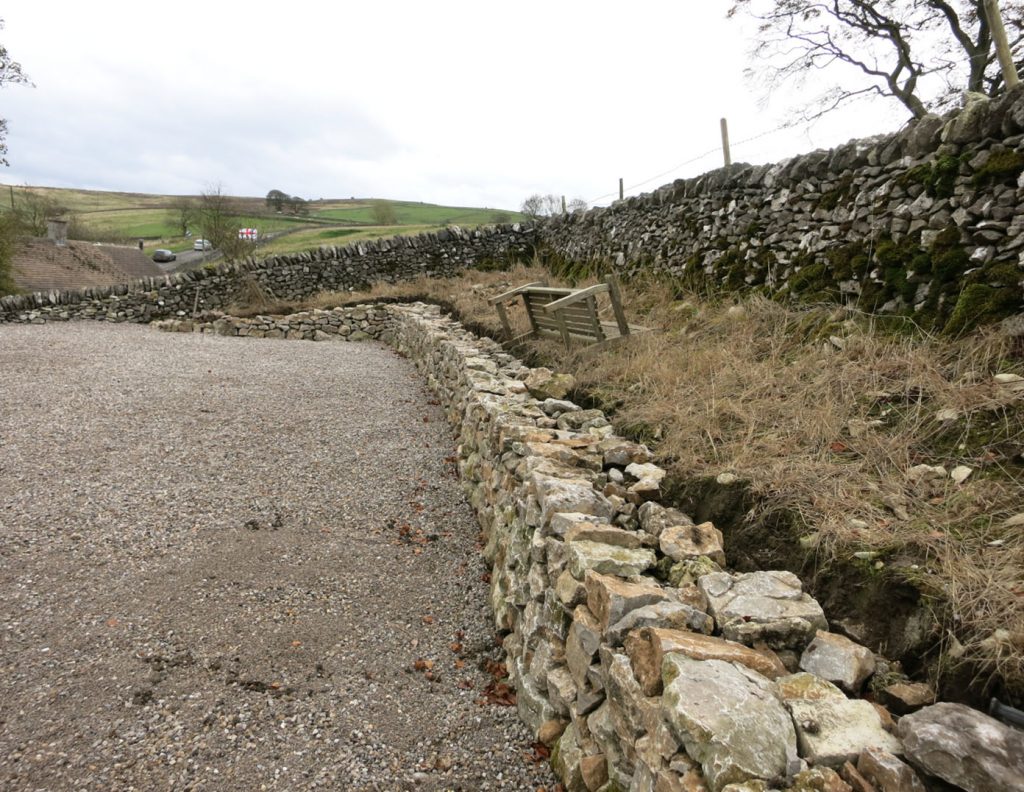
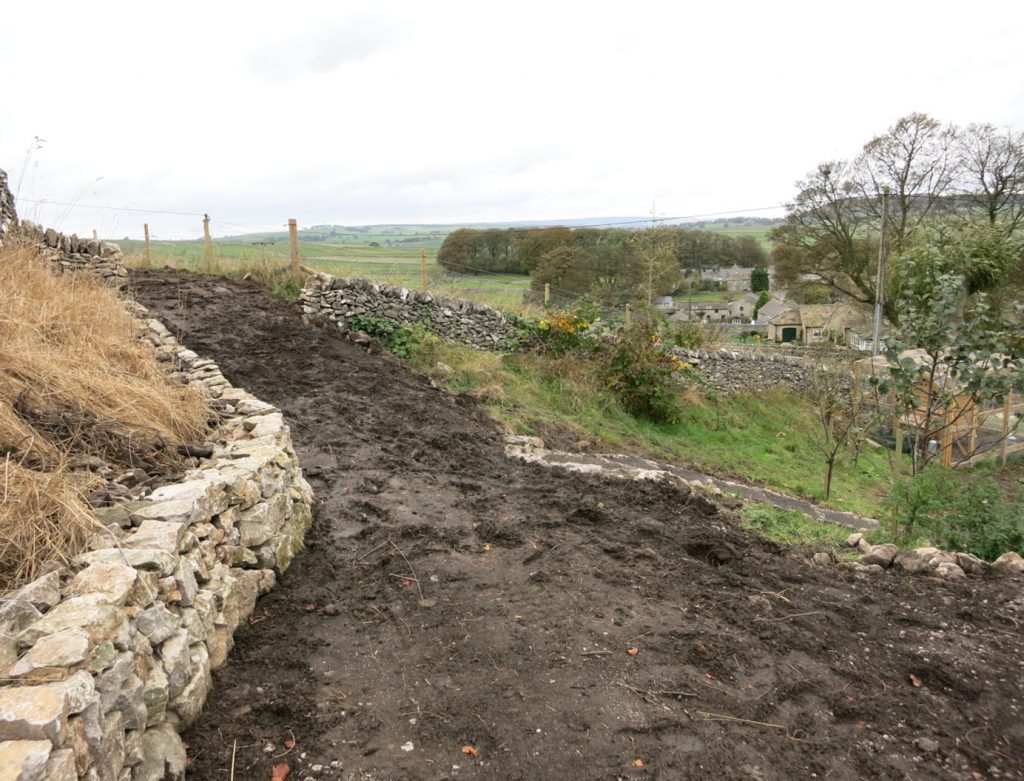
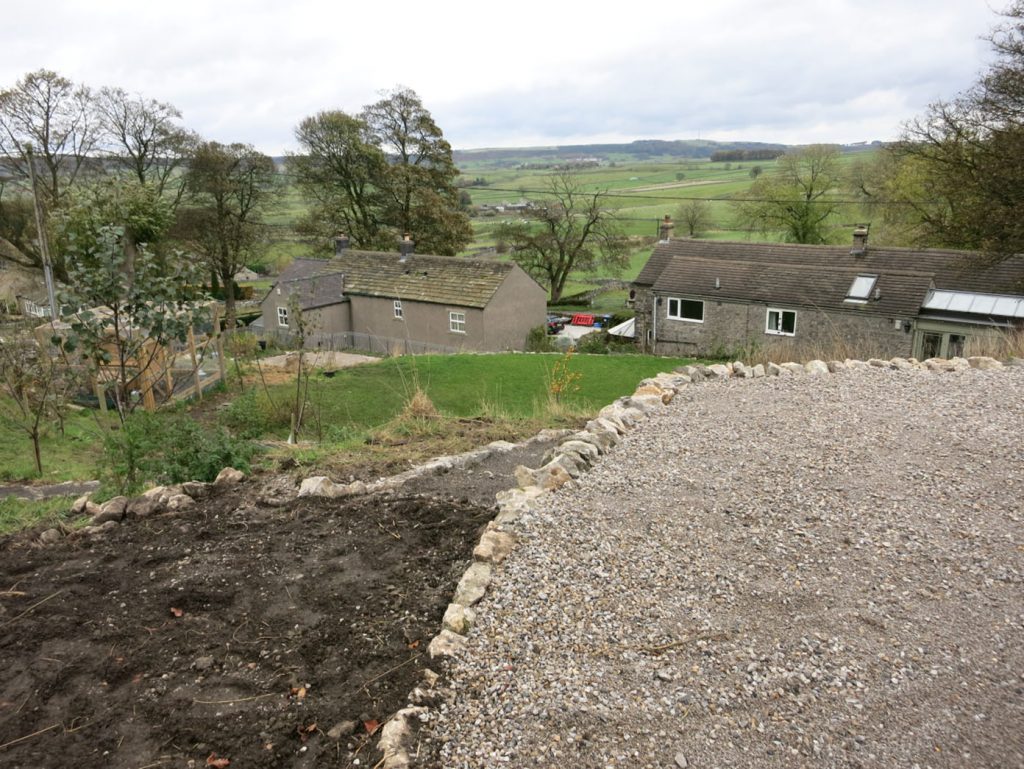
And a fourth photo showing the view from the top of the steps, across the terrace to the countryside beyond. It’s a lovely place to sit on a fine Summer’s day or a particularly starry night.
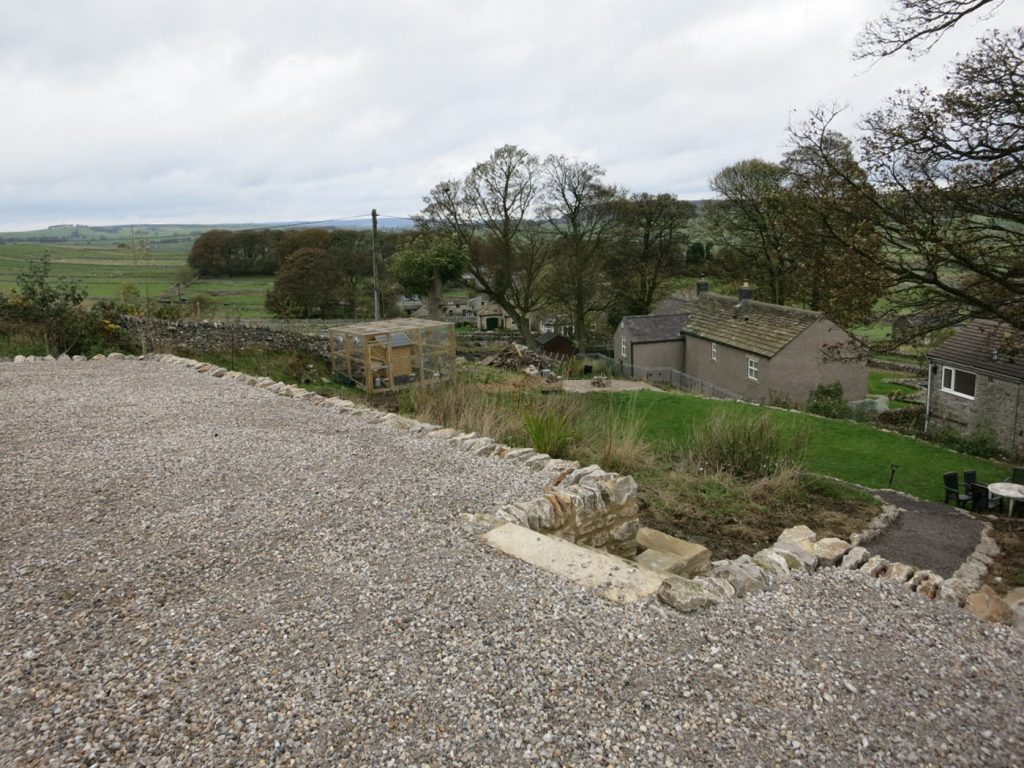
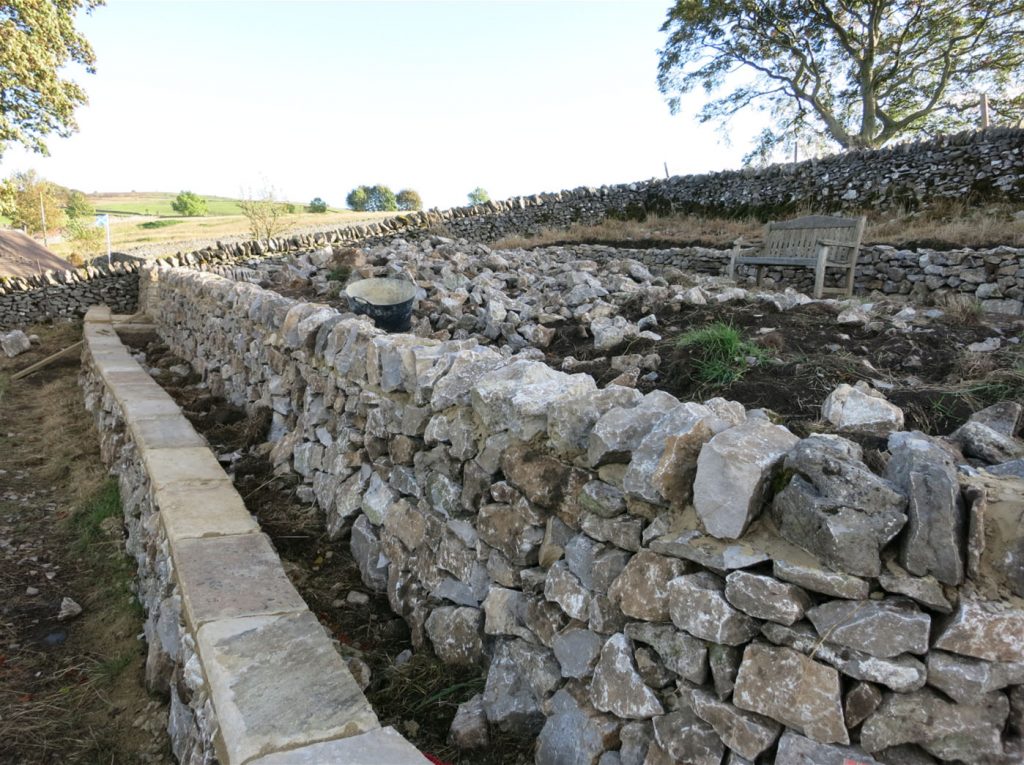
It was while digging planting holes that I came across a straight line of stone & rubble that was clearly the footings of a previous field boundary wall and it was this that gave me the notion of a generous, flat terrace from which to view the garden and surrounding landscape.The height of the retaining wall proved greater than first imagined, so a low, secondary wall was added, creating a narrow strip of a bed in which to add plants to soften the visual barrier. All of the dry stone walling is built using stone excavated on site, with only the steps and flat coping slabs needing to be bought.
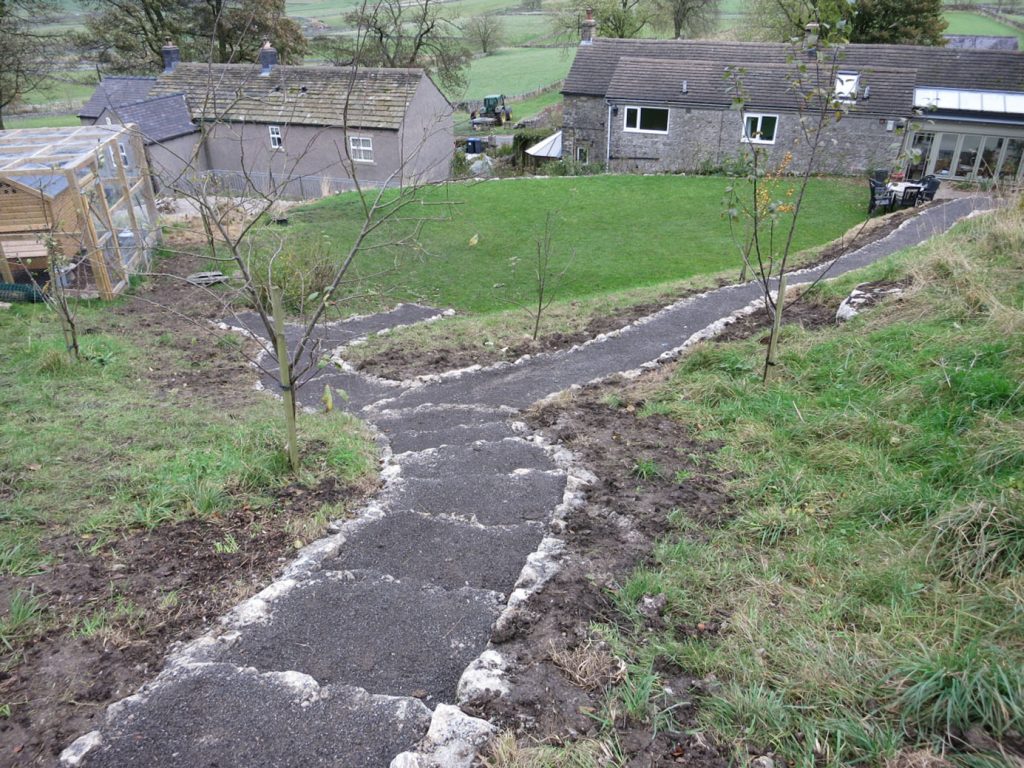
difficulty of working it. As the fruit trees had been planted a year or two previously, wherever I could find a deep enough, rock-free planting hole, the paths would have to wind their way up the hill between the trees.
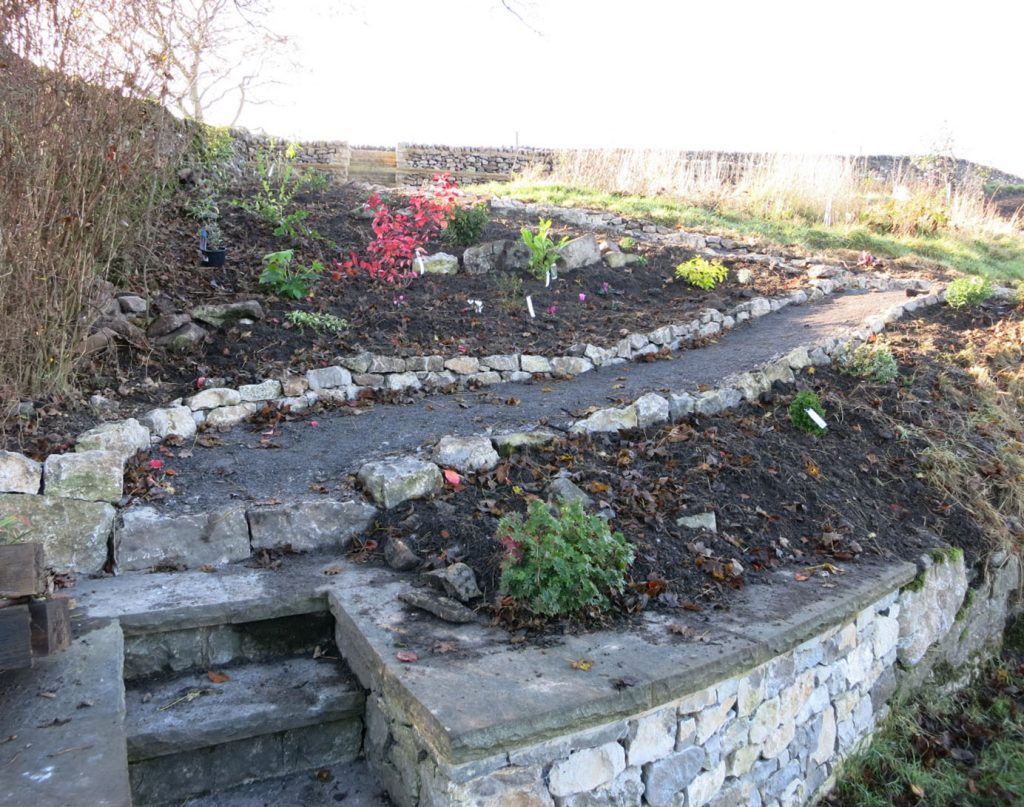
Although it’s great to have professionals in to sort out the hard landscaping, I couldn’t wait for them to go so that I could get cracking on the planting. This part of the hillside is in the dappled shade of the old Sycamore tree for most of the Summer. As it is in direct view of the orangery, where we tend to sit and look out onto the garden during the chillier parts of the year, I decided to create a backbone of shrubs and concentrate on infilling with those plants which would give interest during Autumn and Spring:- Rhus Cotinus, Sarcococca, Cherry Laurel, Prunus Kojo No Mai, Escalonia Cotinus Horizontalis and Holly were underplanted with Snowdrops, Tenby Daffodils, Wallflowers, Cyclamen Coum, Cyclamen Hederifolium, Snakeshead Fritillaries, Aubretia, Anemone Blanda, Pulmonaria, Sedum and Saxifrage and, of course, my much-favoured Native Primrose.
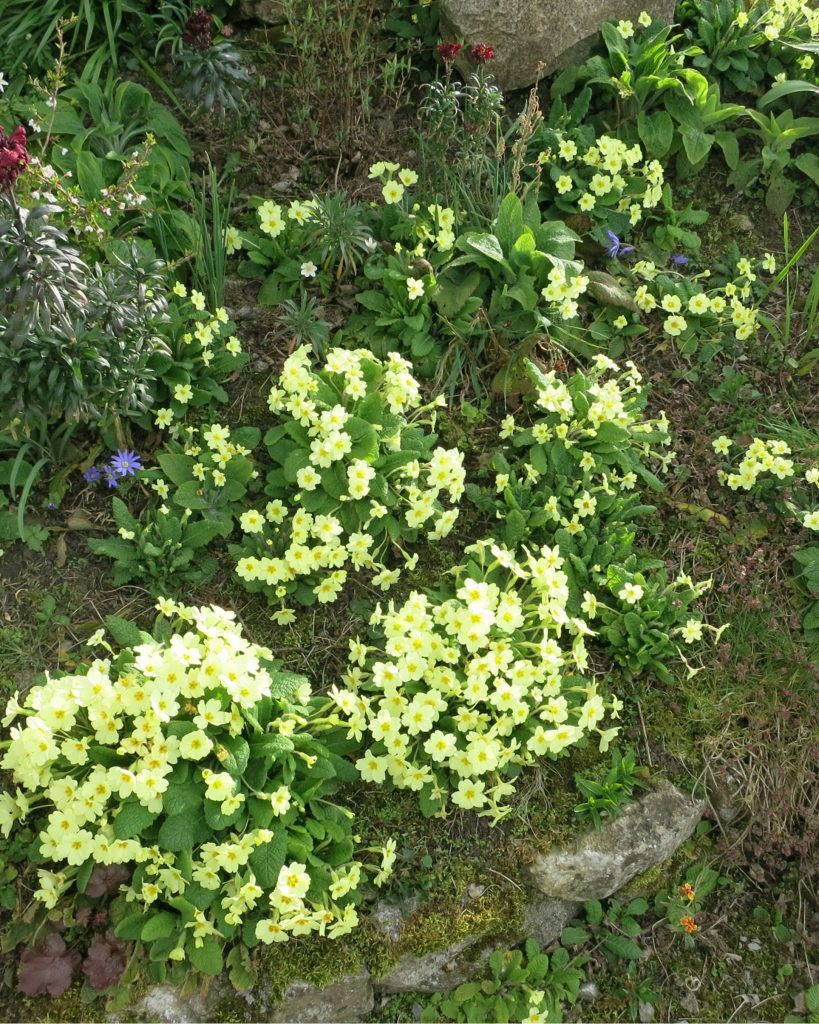
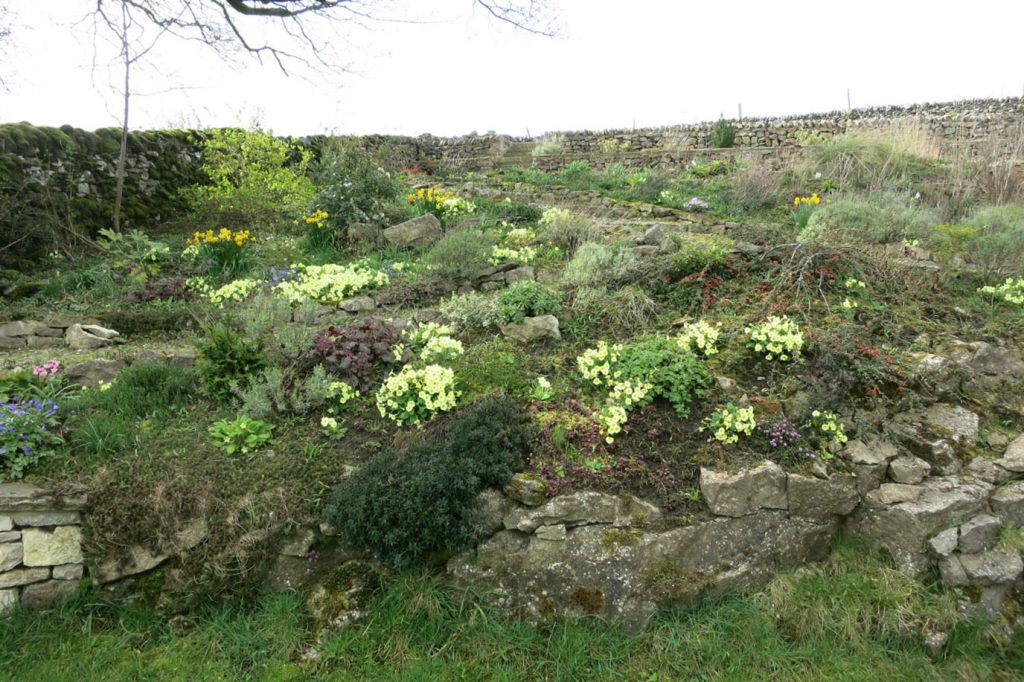
Other Spring-flowerings in view from the comfort of the orangery include Tulip Menton & various Hellebores
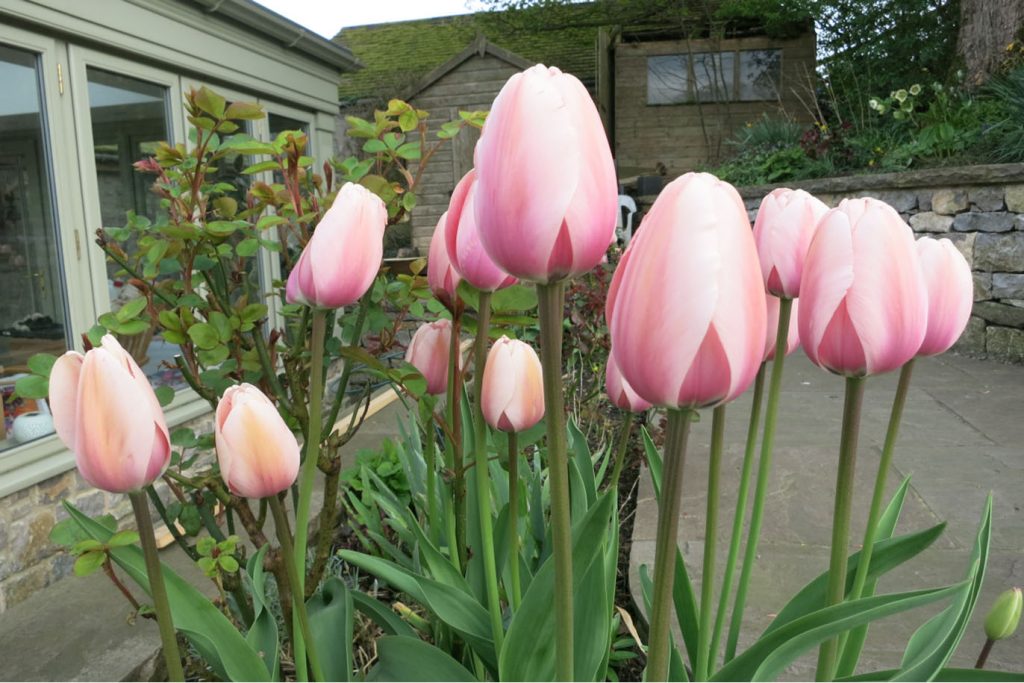
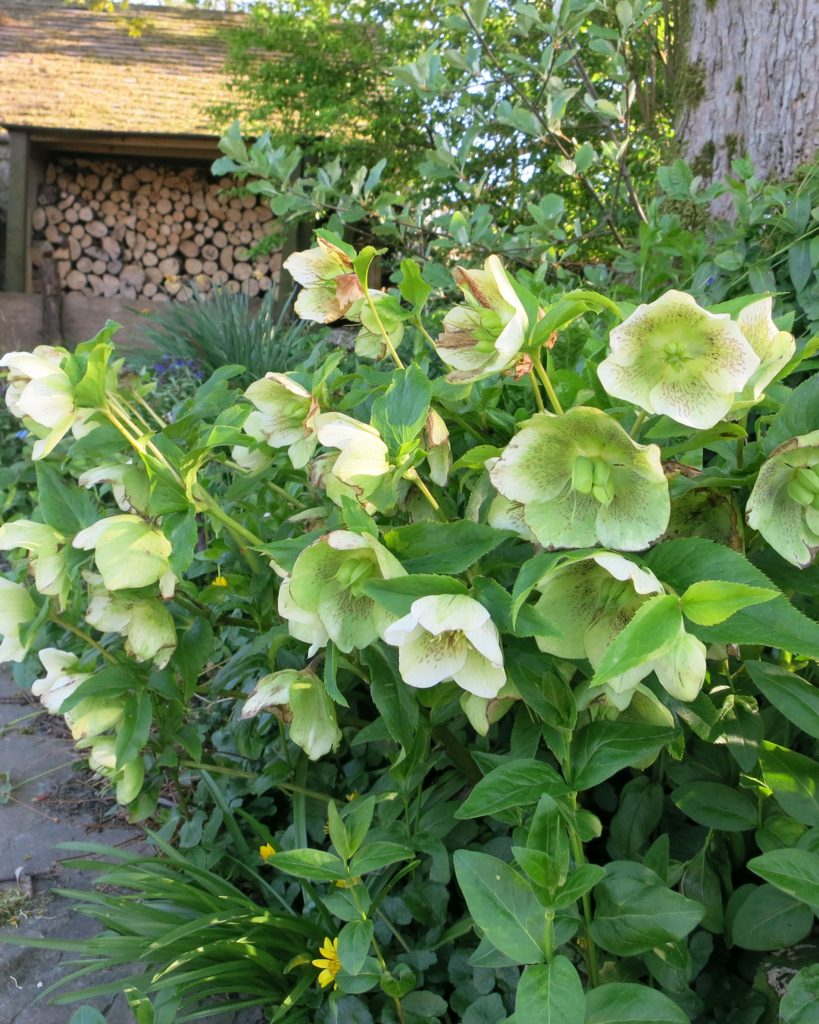
Working my way up from the bottom of the hill towards the terrace, it soon became apparent that access for weeding, planting and maintenance was becoming impossible, so I made a very informal pathway sub-dividing the large triangular planting area.
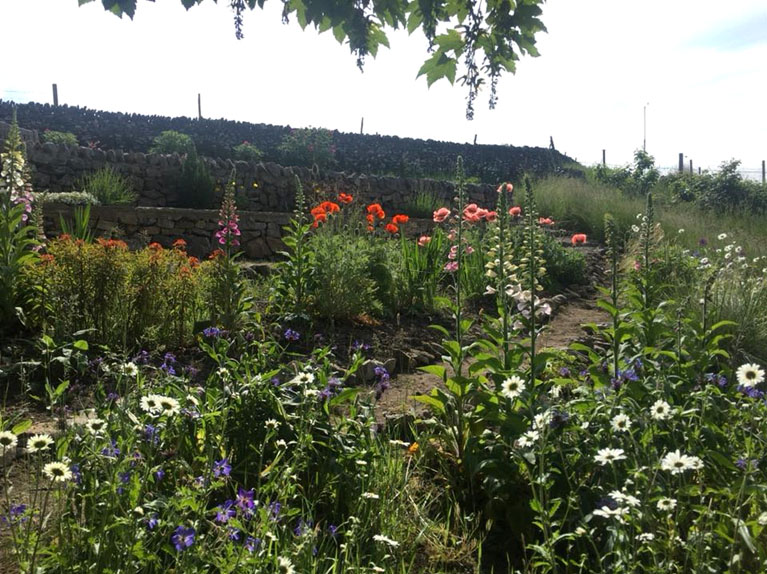
Just a couple of years after building, the hillside bed is filling up nicely
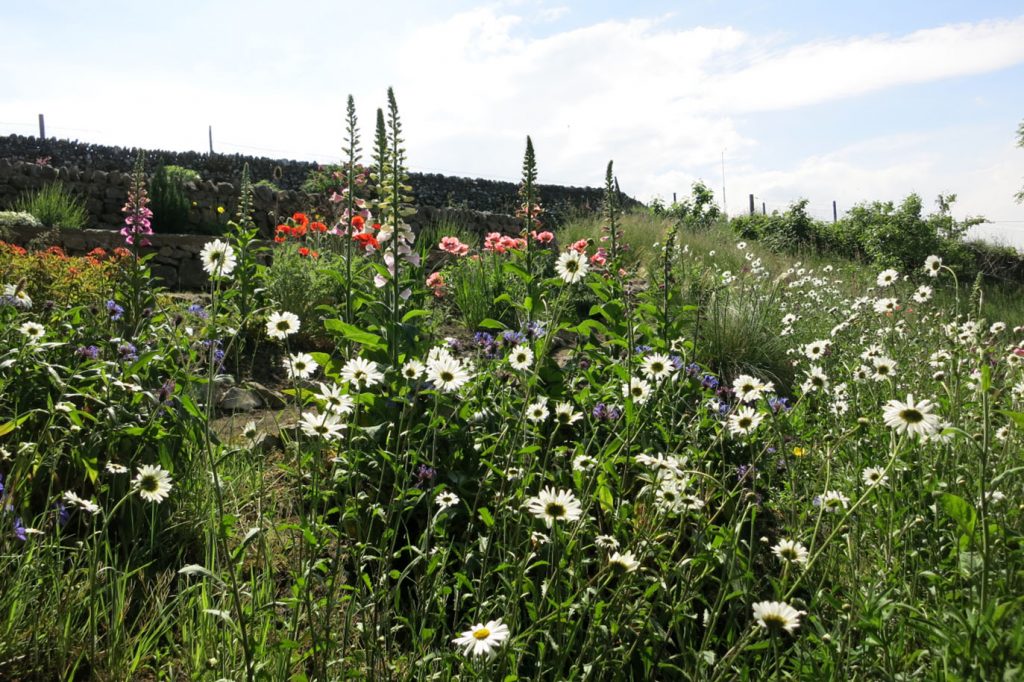
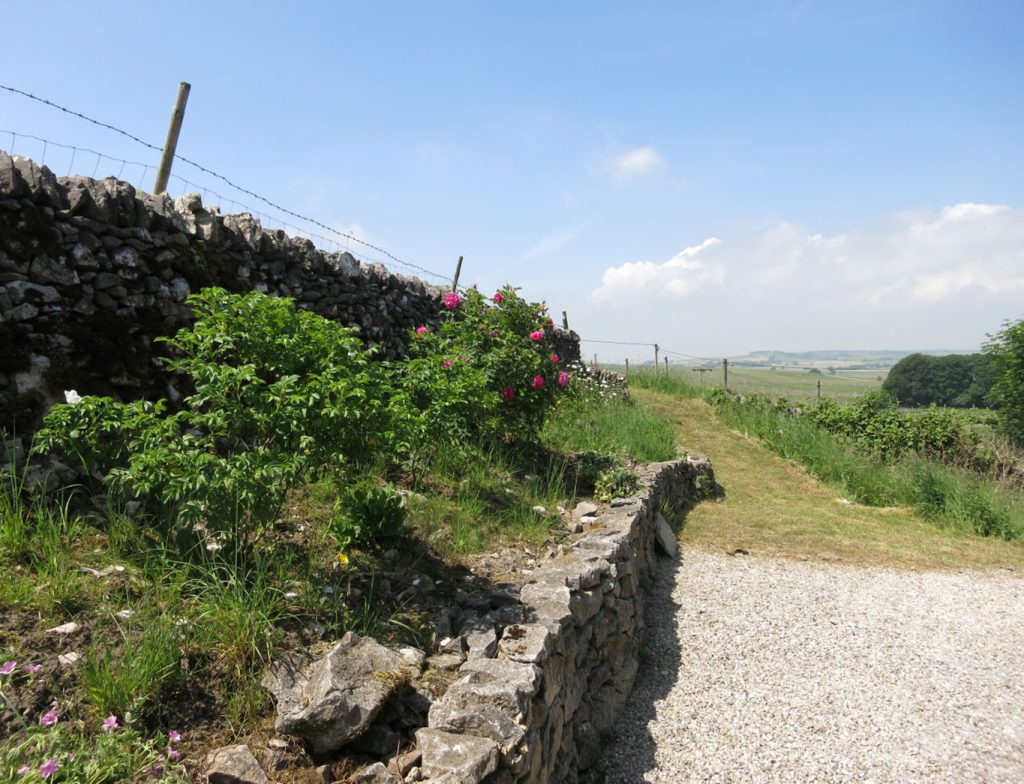
Rosa Wild Edric planted in the very stony bank at the very top of the garden, looking across the top of the field, the fence at the top edge of the chicken run, and the glorious Derbyshire landscape beyond. It will be a real challenge to grow anything of note in this topmost bed; not only is it high and exposed, but what little soil there is, is choked with grass and weed roots persistently creeping beneath and through the dry stone wall from the field beyond, so it will be mainly wild flowers interspersed with a few tough plants such as Rosa Rugosa and Sambucus Black Lace.
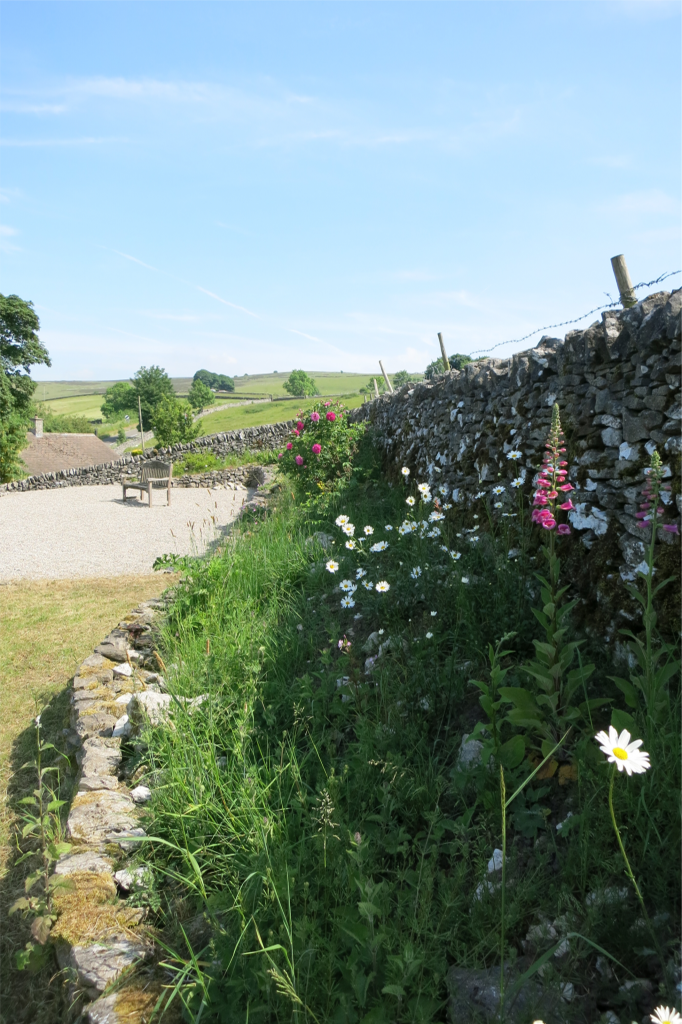

For decades, the hillside was rough grazing land; the shallow soil is laden with grass & weed seed and has a tendency to revert if left untended.
The steep gradient prevents the use of any weed-suppressant mulches so it’s as well I have a preference for lax and free planting of hardy perennials and wild flowers.
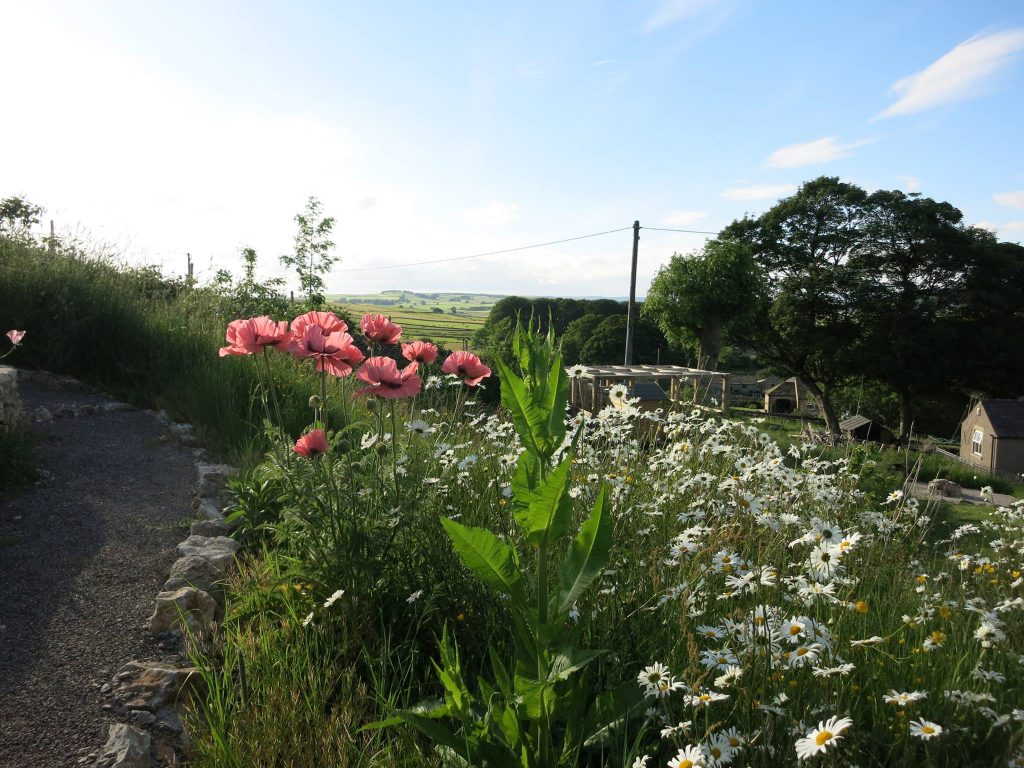
The blue skies might give the impression of a mild climate, which is far from the case; most of my gardening is done during all-too-infrequent periods of dry, though overcast and often windy, days. I tend to take my camera out on days that are sunny and quite still, which can be very few and far between.
